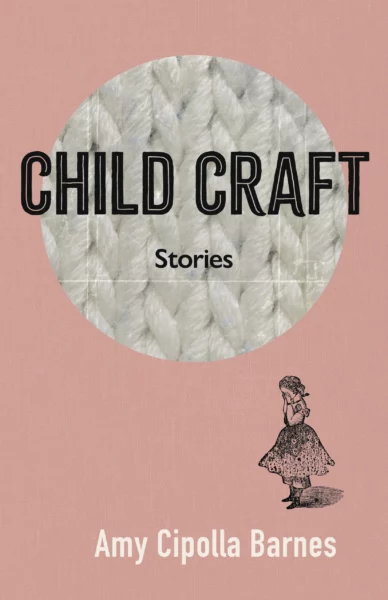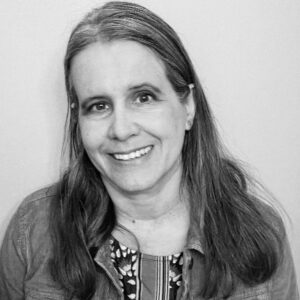
Interviewed by Matt Kendrick
MK: What strikes me reading through these stories is the way they all chime so clearly against each other. There’s such a thematic cohesion to the collection, and I wonder if that was something you planned from the start or was it more a process of discovery?
AB: To be honest, that thematic cohesion is something I fought against. I swore I wasn’t going to write about mothers, children, or parenting. And yet, that was what I was drawn into—the “write what you know” dilemma. I do write in smaller themes too. In Ambrotypes, there are peas—canned ones, peas under mattresses. In Child Craft, there’s pickles and laundry.
My process is to write and submit stories until it feels like a grouping. Because this is a hybrid collection, I pulled in essays and CNF pieces that weren’t included in my fiction-only collections. There are also more unpublished pieces in this book.
MK: I’m always interested in a reader’s journey. Here, it feels as though there are clear threads pulling a reader from one piece to the next. Was it always your intention that a reader follow a journey from beginning to end?
AB: Each of my collections is roughly set up in a linear format. Cradle to grave. That feels especially fitting in collections about mothers and children. Birth. Childhood. Adulthood. Motherhood. End of Life. And everything that could happen in those stages, following the journeys of many women and children, not just one pairing.
MK: One of the things that makes this collection unique is its hybrid approach, blending distinct fiction with distinct non-fiction while also exploring the whole array of possibilities in between. I think of fiction and non-fiction as an axis rather than a binary—is that similar to how you see it? How do you decide how much of yourself to put into your fiction and how much fictionalisation to include in your non-fiction?
AB: There are more-obvious essays in this collection, but I didn’t specify which is fiction and non-fiction. It’s all simply “stories.” There’s a 1970s American commercial introducing Reese’s Peanut Butter Cups which sums up my approach. Two people are walking toward each other—one is carrying a jar of peanut butter and the other, a chocolate bar. They collide and the resulting exclamations are “you got peanut butter in my chocolate” and “you got chocolate in my peanut butter.” Back in the writing world, I include elements of my own life in my fictional writing, but I also lean heavily into the “C” in CNF. In other words, I’ve got fiction in my non-fiction and non-fiction in my fiction.
MK: Jolene McIlwain suggests you take “beautiful risks” in these stories and I would certainly agree that you’re a writer who is always experimenting, always pushing into new territory, but do you tend to think of yourself in this way? And do you have any advice for other writers in striking the balance between risk-taking and restraint?
AB: Jolene’s debut, Sidle Creek, is stunning—as is her Child Craft blurb. I love the idea of taking “beautiful risks” because it exits the traditional, but is also still pretty writing. Even in darker or surreal writing, I try to use words that are poetic or beautiful. And I know we share that love of words since we “met” when you published one of my word-centered flashes at Lucent Dreaming.
Being labeled as “experimental” is a little intimidating because it implies always having to be innovative and I don’t or can’t always write on the edge.
My advice would be to find grounding. Even in surreal writing, there still needs to be things readers find believable. One of my favorite short stories is “All Summer in a Day” by Ray Bradbury. While this story was experimental at the time, there are still grounding elements that are very recognizable: a school and children.
MK: There’s a real sense of place in your stories. While they’re obviously linked by motherhood, it feels as though setting is given an almost equal weight. How much is your exploration of motherhood influenced by setting?
AB: Even in surreal or difficult stories, I try to ground with setting. A sense of home. Place to return to or escape from. Mother as home whether that’s a hospitable place / person. In flash, there really isn’t room for leisurely exposition, but I still try to define place, often with singular details—a town name, interesting landmarks, pop culture, fairy tale call-backs, a defined mother space.
MK: One thing I’ve noticed in your writing journey is how much attention you give to developing your writing craft and defining your own unique voice. What have been the lightbulb moments for you in developing as a writer? What has really resonated with you in terms of how you want to write?
AB: I write fiction, but also non-fiction in the lifestyle space—food writing, recipe development, parenting, culture and home articles. There are elements of article writing in my fiction and essays. There’s also irony as I set out to not write about parenting, but have settled firmly into that niche in all my writing. I recently co-wrote a script and even in collaboration, we focused on mothers. I’ve been labeled “prolific” and do have a lot of words, but that’s also based in the insecurity of not having an MFA.
The thing that resonates for me most is other writers. Community. Talent. The way people turn words into stories I wish I’d written—those lightbulb moments of brilliance and surprising simplicity that shine a creative light. Reading other people’s words drives me forward in writing my own.
MK: Finally, I have to bring up the wonderful artwork. For me, the artwork adds an additional layer. Was this pre-planned or was it something that came after the stories had been written?
AB: Melissa Llanes Brownlee illustrated a story of mine for JMWW Journal. I love artwork in collections and wanted a nostalgic feel—her line drawings were a wonderful fit. She created original artwork for the endplates, based on two specific stories, with elements of others.
Child Craft (110 pages) is available from Belle Point Press
_________________________
 Amy Cipolla Barnes is the author of three collections: Mother Figures (ELJ Editions, 2021), Ambrotypes (Word West LLC, 2022), and Child Craft (Belle Point Press, 2023.) She has words at The Citron Review, Spartan Lit, JMWW Journal, No Contact Mag, Leon Review, Complete Sentence, Gone Lawn, The Bureau Dispatch, Nurture Lit, X-R-A-Y Lit, McSweeney’s, Cease, Cows and many others. Her writing has been nominated for Best of the Net, the Pushcart Prize, Best Microfiction, long-listed for the Wigleaf Top50 in 2021, 2022, and 2023, and included in The Best Small Fictions 2022. She’s a Fractured Lit Associate Editor, Gone Lawn co-editor, Ruby Lit assistant editor, and reads for The MacGuffin, The Best Small Fictions, CRAFT, and Narratively.
Amy Cipolla Barnes is the author of three collections: Mother Figures (ELJ Editions, 2021), Ambrotypes (Word West LLC, 2022), and Child Craft (Belle Point Press, 2023.) She has words at The Citron Review, Spartan Lit, JMWW Journal, No Contact Mag, Leon Review, Complete Sentence, Gone Lawn, The Bureau Dispatch, Nurture Lit, X-R-A-Y Lit, McSweeney’s, Cease, Cows and many others. Her writing has been nominated for Best of the Net, the Pushcart Prize, Best Microfiction, long-listed for the Wigleaf Top50 in 2021, 2022, and 2023, and included in The Best Small Fictions 2022. She’s a Fractured Lit Associate Editor, Gone Lawn co-editor, Ruby Lit assistant editor, and reads for The MacGuffin, The Best Small Fictions, CRAFT, and Narratively.
 Matt Kendrick is a writer, editor and teacher based in the East Midlands, UK. His work has been featured in various journals and anthologies including Craft Literary, Best Microfiction, and The Best Small Fictions. Website: www.mattkendrick.co.uk | Substack: https://prattlefogandgravelrap.substack.com/
Matt Kendrick is a writer, editor and teacher based in the East Midlands, UK. His work has been featured in various journals and anthologies including Craft Literary, Best Microfiction, and The Best Small Fictions. Website: www.mattkendrick.co.uk | Substack: https://prattlefogandgravelrap.substack.com/

 The core workshop of SmokeLong Fitness is all in writing, so you can take part from anywhere at anytime. We are excited about creating a supportive, consistent and structured environment for flash writers to work on their craft in a community. We are thrilled and proud to say that our workshop participants have won, placed, or been listed in every major flash competition. Community works.
The core workshop of SmokeLong Fitness is all in writing, so you can take part from anywhere at anytime. We are excited about creating a supportive, consistent and structured environment for flash writers to work on their craft in a community. We are thrilled and proud to say that our workshop participants have won, placed, or been listed in every major flash competition. Community works.